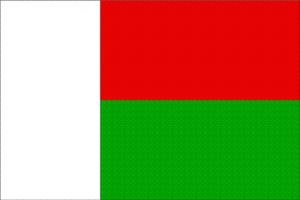Difference between revisions of "Language/Plateau-malagasy/Grammar/Basic-Sentence-Structure"
m (Quick edit) |
m (Quick edit) |
||
| Line 1: | Line 1: | ||
<span pgnav> | |||
{| class="wikitable pg_template_nav" | |||
|[[Language/Plateau-malagasy/Grammar/Alphabet-and-Pronunciation|◀️ Alphabet and Pronunciation — Previous Lesson]] | |||
|[[Language/Plateau-malagasy/Vocabulary/Basic-Greetings|Next Lesson — Basic Greetings ▶️]] | |||
|} | |||
</span> | |||
{{Plateau-malagasy-Page-Top}} | {{Plateau-malagasy-Page-Top}} | ||
| Line 133: | Line 140: | ||
{{Plateau-malagasy-Page-Bottom}} | {{Plateau-malagasy-Page-Bottom}} | ||
<span links></span> | <span links></span> | ||
<span pgnav> | |||
{| class="wikitable pg_template_nav" | |||
|[[Language/Plateau-malagasy/Grammar/Alphabet-and-Pronunciation|◀️ Alphabet and Pronunciation — Previous Lesson]] | |||
|[[Language/Plateau-malagasy/Vocabulary/Basic-Greetings|Next Lesson — Basic Greetings ▶️]] | |||
|} | |||
</span> | |||
Revision as of 22:32, 2 April 2023
| ◀️ Alphabet and Pronunciation — Previous Lesson | Next Lesson — Basic Greetings ▶️ |
Plateau Malagasy is a Malagasy language spoken in the central region of Madagascar by the Merina people. It has become the national language of the country, and it is the most widely spoken language in Madagascar. It is one of the three official languages of Madagascar, alongside French and English.
The grammar of Plateau Malagasy follows subject-verb-object (SVO) order, like English. This means that the subject of the sentence comes first, followed by the verb, and then the object. For example, the sentence "I eat rice" would be translated into Plateau Malagasy as "Manoka riziky aho."
Let's take a closer look at each element of the basic sentence structure in Plateau Malagasy:
Take some time to dive into these other pages after completing this lesson: Irregular Verbs & 0 to A1 Course.
Subject
The subject of a sentence in Plateau Malagasy can be either a noun or a pronoun. Nouns in Plateau Malagasy have a gender, which affects the form of the noun and the adjectives that describe it. Pronouns in Plateau Malagasy are categorized as first person (referring to the speaker), second person (referring to the listener), or third person (referring to someone or something else).
Examples
Here are some examples of Plateau Malagasy subjects:
| Plateau Malagasy | Pronunciation | English |
|---|---|---|
| Zaza | /za.za/ | Child |
| Ny vehivavy | /ni.ˈve.hi.ˌva.vi/ | The woman |
| Ianao | /ˈja.naw/ | You (singular) |
| Izahay | /i.ˈza.haj/ | We |
Verb
The verb in a Plateau Malagasy sentence comes after the subject and before the object. Verbs in Plateau Malagasy are conjugated based on tense and person. There are three main tenses in Plateau Malagasy: present, past, and future. The present tense is used for actions that are currently happening or are habitually done. The past tense is used for actions that have already happened. The future tense is used for actions that will happen in the future.
Examples
Here are some examples of Plateau Malagasy verbs:
| Base Form | Present Tense Conjugation | Past Tense Conjugation | Future Tense Conjugation | ||||
|---|---|---|---|---|---|---|---|
| Mandeha | Manomboka mihira aho. | Nanomboka mihira aho. | Hanao mihira aho. | To go | I am starting to sing. | I started to sing. | I will sing. |
| Mihira | Mihira rano ny mpihira. | Nirano ny mpihira. | Hanohitra ny mpihira. | To sing | The singers are singing. | The singers sang. | The singers will sing. |
| Mieritreritra | Mieritreritra aho fa tsara. | Nieritreritra aho fa tsara. | Hiezerana ho tsara aho. | To think | I'm thinking it's good. | I thought it was good. | I'll think it's good. |
Object
The object of a sentence in Plateau Malagasy comes after the verb. It can be either a noun, a pronoun, or a phrase that acts as a noun. In a basic sentence structure, there is usually only one object. However, complex sentences can have multiple objects.
Examples
Here are some examples of Plateau Malagasy objects:
| Plateau Malagasy | Pronunciation | English |
|---|---|---|
| Ny vary | /ni ˈva.ri/ | The rice |
| Ny sakafo tsara | /ni ˈsa.ka.fo ˈtsa.ra/ | The good food |
| Izy ireo | /i.zi i.ˈre.o/ | Them |
Word Order
In Plateau Malagasy, the basic word order is subject-verb-object (SVO). However, certain adverbs or other sentence constructions can change the word order. For example, adverbs of time typically come at the beginning of the sentence.
Examples
Here are some examples of Plateau Malagasy sentences with different word orders:
- Mampianatra aho angamba ny vehivavy.
- Ny vehivavy no mampianatra aho angamba.
- Angamba ny vehivavy no mampianatra aho.
- I'm teaching the woman maybe.
- The woman is being taught by me maybe.
- Maybe it's the woman who is being taught by me.
Negation
To make a negative sentence in Plateau Malagasy, the word "tsy" is added before the verb. For example, "Manoka rano aho" means "I'm drinking water," while "Tsy manoka rano aho" means "I'm not drinking water."
Examples
Here are some examples of negation in Plateau Malagasy sentences:
- Tsy te hihinana lela aho.
- I'm not eating rice.
- Tsy misy mpampianatra ao anatiny.
- There isn't a teacher in there.
With a good understanding of basic sentence structure in Plateau Malagasy, students will be on their way to mastering the language. Happy learning!
Other Lessons
- Adjectives
- Conjunctions and Their Usage
- How to Use Be
- Conditional Mood
- Adverbs and Their Usage
- Descriptive Adjectives
- Present, Past, and Future Tenses
- Nouns and Gender
- Give your Opinion
- Alphabet and Pronunciation
Template:Plateau-malagasy-Page-Bottom
| ◀️ Alphabet and Pronunciation — Previous Lesson | Next Lesson — Basic Greetings ▶️ |
